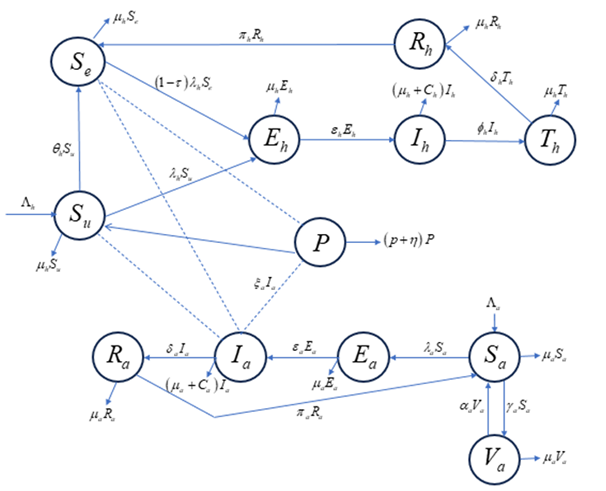Mathematical Model for the Dynamics of Anthrax in Human and Animal Populations Incorporating Control Measures
Keywords:
Anthrax, Reproduction Number, Vaccination, Stability, SimulationsAbstract
Anthrax is a zoonotic infectious disease caused by the bacterium Bacillus anthracis. In this study, we develop and analyze a deterministic compartmental model, formulated using ordinary differential equations, to explore the transmission dynamics of anthrax between humans and animals. Fundamental properties of the model, such as positivity, boundedness, and the existence of equilibrium points are established, confirming that the model is mathematically and biologically well-posed. The basic reproduction number, R0 , is derived using the next-generation matrix approach. Stability analysis shows that the disease-free equilibrium is both locally and globally asymptotically stable when R0<1. Additionally, the model possesses a unique endemic equilibrium when R0>1, which is also globally stable when R0<1 . Numerical simulations are conducted to validate and illustrate the theoretical results.

Published
How to Cite
Issue
Section
Copyright (c) 2025 Journal of Science Research and Reviews

This work is licensed under a Creative Commons Attribution-NonCommercial 4.0 International License.
- Attribution — You must give appropriate credit, provide a link to the license, and indicate if changes were made. You may do so in any reasonable manner, but not in any way that suggests the licensor endorses you or your use.
- NonCommercial — You may not use the material for commercial purposes.
- No additional restrictions — You may not apply legal terms or technological measures that legally restrict others from doing anything the license permits.




